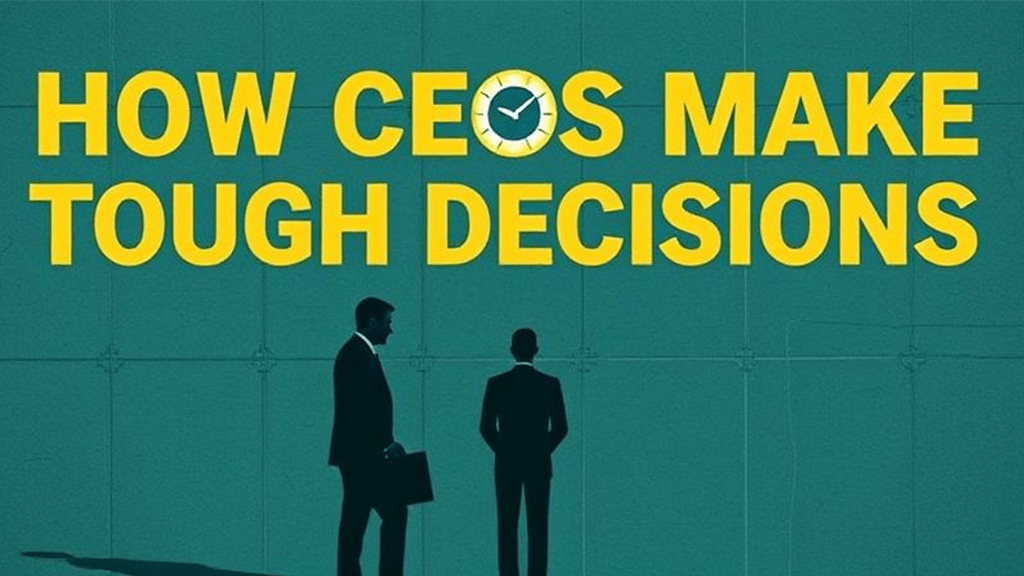Leadership 2026: The Rise of AI-Native CEOs

By 2026, leadership will undergo the most significant shift in decades—not because of technology alone, but because of what technology demands from the humans who lead it. Artificial intelligence will permeate every layer of decision-making, yet the organizations that thrive will be those that root technological capability in human-centered cultures built to innovate, adapt, and grow.
This new class of executives—AI-native CEOs—represents the next evolution of global leadership. Unlike earlier generations who “adopted” digital tools, these leaders fuse AI fluency with emotional intelligence, ethical reasoning, and organizational empathy. The companies they build are not machine-led; they are human-led, empowered by machines.
This is the leadership frontier of 2026.
1. What Makes a CEO “AI-Native” in 2026?
An AI-native CEO is not simply a leader who uses AI tools. It is a leader who:
1. Thinks with data, not just intuition
Decision cycles shrink from weeks to hours. Leaders rely on predictive analytics, real-time insights, and scenario modeling as extensions of their strategic thinking.
2. Designs organizations for machine–human collaboration
AI-native leadership 2026 focuses on pairing human creativity, judgment, and ethics with machine precision and automation.
3. Builds AI fluency across the C-suite
Not just CTOs—CFOs, CHROs, CMOs, and COOs all operate with AI intelligence baked into their functions.
4. Prioritizes ethical, transparent AI
AI-native CEOs enforce strong governance, robust bias controls, and responsible-use frameworks.
5. Views technology as a cultural accelerator, not a replacement
They use AI to enrich work, reduce friction, and amplify talent—not diminish it.
By 2026, these leaders will set the global standard for competitiveness.
2. Why Human-Centric Organizations Will Outperform in 2026
Even in an AI-immersed world, human-centered design becomes more—not less—important. The organizations that thrive will empower people to feel trusted, supported, and capable of doing meaningful work in partnership with technology.
a. Employee experience becomes a strategic differentiator
Attrition costs rise, skill shortages widen, and the best people gravitate toward cultures that promote autonomy, learning, and psychological safety.
b. Continuous reskilling replaces static roles
Human-centric organizations shift from job descriptions to fluid skills-based architectures, enabling mobility, growth, and cross-functional innovation.
c. Adaptive culture becomes the new currency of performance
Companies with fast-learning teams outperform slow, rigid cultures—even when they have similar AI systems.
d. Trust becomes a measurable business asset
With AI taking over analysis and automation, the human elements—Trust, communication, ethics, and leadership—directly influence performance.
AI-native leadership 2026 is not about machines leading people. It is about leaders designing systems that elevate people and machines.
3. How AI-Native CEOs Will Redefine Strategy in 2026
1. Strategic decisions become dynamic, not annual
Predictive models forecast demand, supply, risk, and customer behavior with high precision. CEOs respond with rapid pivots, resource shifts, and real-time scenario moves.
2. Growth becomes algorithmically guided
AI-native CEOs identify new markets, optimize pricing, personalize offerings, and uncover micro-opportunities earlier than competitors.
3. Corporate risk management becomes AI-enhanced
From cyber threats to macroeconomic shocks, early-warning systems detect patterns humans miss.
4. Capital allocation becomes data-backed and faster
Leaders invest, divest, and restructure portfolios with greater accuracy and speed.
In 2026, strategy becomes less about annual presentations and more about continuous strategic intelligence.
4. How AI-Native CEOs Will Transform Workforce Leadership
a. The shift from command-and-control to coach-and-enable
Employees need empowerment, not instructions. The AI-native CEO creates systems that enable teams to move quickly without a rigid hierarchy.
b. Skill ecosystems replace traditional training
Learning becomes personalized, AI-curated, and integrated into daily workflows.
c. Hybrid, distributed teams become the norm
2026 leadership requires mastery in managing global, remote, and AI-augmented teams.
d. “Meaningful work” becomes organizational architecture
Low-value tasks are automated. High-value work—innovation, judgment, creativity—is intentionally designed and cultivated.
This is how human-centric organizations grow faster than machine-centric ones.
5. Ethical, Transparent Leadership Becomes Non-Negotiable
As AI becomes more powerful, ethical leadership becomes more visible.
AI-native leadership 2026 means:
- Transparent AI decisions
- Clear governance
- Bias prevention
- Employee privacy protection
- Ethical data use
- Open communication about risks and tradeoffs
The CEO becomes Chief Steward of AI Responsibility, ensuring technology is deployed fairly and safely.
6. Culture Will Matter More Than Technology
One of the biggest misconceptions about AI evolution is that technology is the source of competitive advantage.
In 2026, culture is the advantage.
Two companies can buy the same AI system.
Only one can build a culture where people:
- Use it effectively
- Trust it
- Innovate with it
- Please improve it
- Challenge it
- Grow from it
This is why AI-native CEOs place culture at the center of transformation.
7. The 2026 CEO Skill Set: What Will Define Elite Leaders?
By 2026, CEOs will need:
1. AI Fluency
Not coding—decision fluency. Understanding models, predictions, risks, and value levers.
2. System Thinking
Ability to see connections across technology, operations, people, and markets.
3. High Adaptability
Continuous pivots, faster cycles, shorter planning horizons.
4. Emotional Intelligence
Most AI-native CEOs are the most human-centered leaders.
5. Ethical Judgment
As AI accelerates, ethics becomes a strategy.
6. Narrative Leadership
Employees follow stories, not dashboards. CEOs must articulate a compelling future.
These skills define the top tier of global leadership.
8. The CEO Outlook: What Leadership Will Look Like Beyond 2026
By 2026, the world’s most successful leaders will:
- Reinvent organizations faster than competitors
- Build cultures where humans flourish with AI
- Lead multi-layered human–machine teams
- Use data as a partner, not a replacement
- Center all decisions around people
- Embrace transparent, ethical leadership frameworks
The defining question for CEOs will be:
“How do I build a company where humans and AI make each other better?”
Those who answer it correctly will shape the next decade of global business.








































































































































